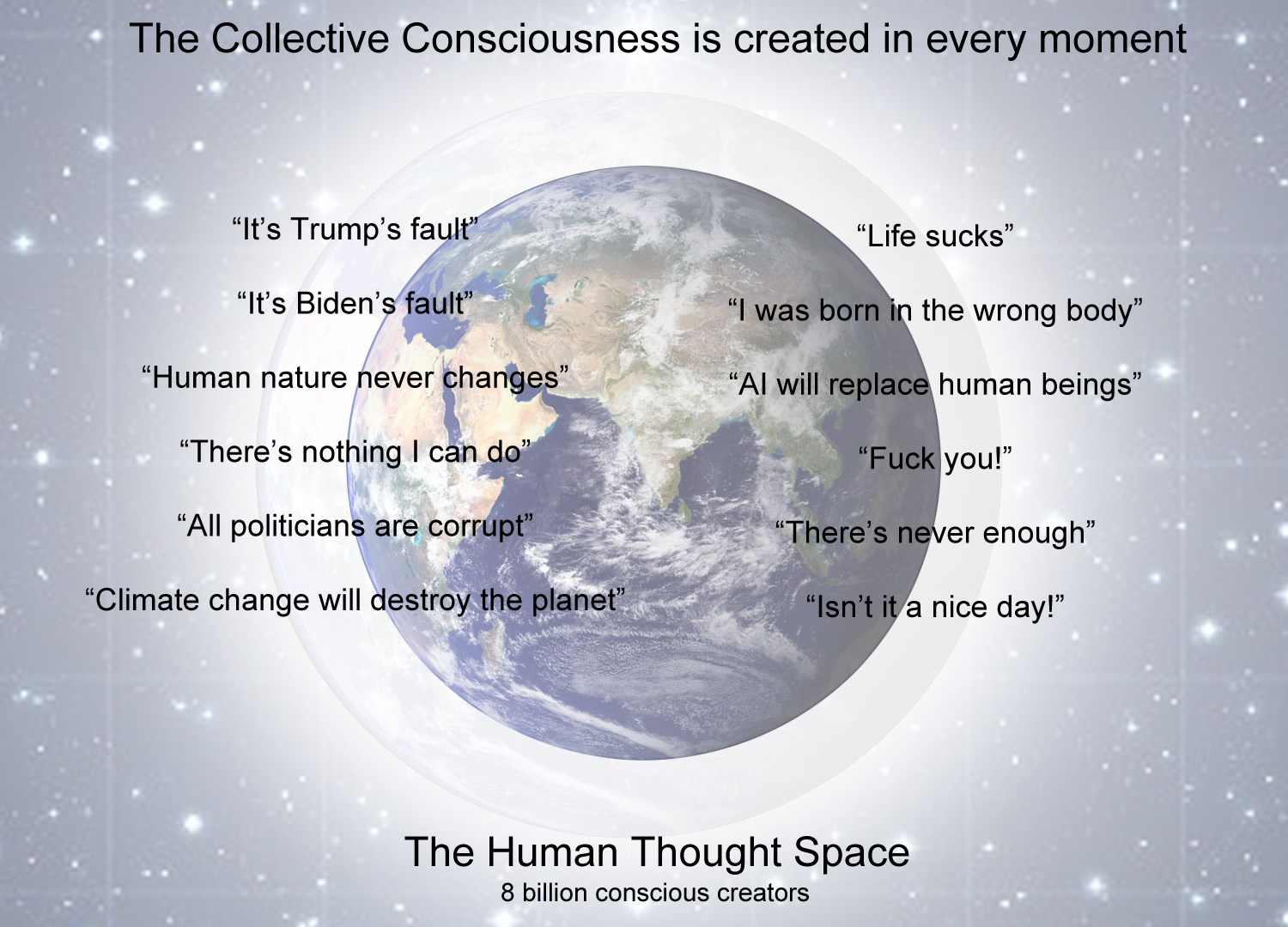


C.J. Jung defined the “collective unconscious.” According to Jung, the human collective unconscious exists in the unconscious mind and is populated by ancient primal symbols that he called archetypes. These archetypes, such as the Wise Old Man, the Tree of Life, the Great Mother, the Tower, etc., are shared mental concepts of the human race.
The collective consciousness, however, is the active thought space, dynamically created in every moment, by 8 billion human beings. The collective consciousness is a collective conscious mind that can influence the thoughts of conscious human beings.

The idea of a collective consciousness is consistent with the assumption of a nonphysical basis for consciousness that we have used throughout these essays. Without going into this subject too deeply we can point out that intuition and ESP are recognized concepts that depend upon transfer of information without the use of machines or devices, and independent of direct contact with any of the five human senses.
Consider the idea that thoughts have an independent existence. This is not such a strange concept if you consider that a photon has zero mass, but yet is the basic unit (quantum) of electromagnetic energy (light). One might argue that it is possible to observe photons; however, it is also possible to pick up on another’s thoughts.
Consider that there are presently about 8 billion humans on the earth, and you can imagine how many thoughts enter the collective conscious every day! We are, literally, immersed in a sea of thought. Imagine that similar thoughts combine to form streams, or rivers. The more powerful the thought stream, the easier it is to tap into. For example, thoughts of hatred and violence are very powerful, as are thoughts of love and understanding. Your vibrational orientation determines the range of thought you can receive. A happy person will pick up on cheerful thoughts, and an angry person might pick up on thoughts of hatred and revenge. Are all of your thoughts in a typical day consciously self-generated? Could they be influenced by thoughts from the mass consciousness?
This goes to the heart of living life as a sovereign.
A sovereign is one who consciously generates his or her own thought and who can recognize the difference between their own conscious thought and one from mass consciousness. A sovereign does not let the opinions of authority figures or mass media influence or sway him or her unless by conscious choice.
In this scenario, BEING controls DOING and ACTION. You, by your conscious thought, are the director of your life. Like the king on his throne, you have the capability of a Sovereign, but that power needs to be consciously and mindfully used.
There is always a split-second free will choice made for every situation in life, even if it is something as trivial as what to have for breakfast, or making that left turn into the parking lot at work. The life of a physical being is a series of free-will choices.
This may seem incorrect, because so many of the decisions we make every day seem to be already defined. We cannot decide to take a week off work, otherwise our job is in jeopardy. And if the rent or the mortgage isn’t paid, we will wind up with our fannies in the street. But there is always another choice that can be made. If one gets fired from one's job, there is another job out there. Or you can create your own job. A Sovereign knows this because he or she has been making conscious decisions for a long time.
“You are delusional,” you say. “The economy sucks. I am already working two jobs just to make ends meet. I am trapped in a life I hate.”
Well, what’s the alternative to being a Sovereign? More of the same old shit. Either submitting or rebelling, which is unlikely to change conditions for the better (see Part 1).
Perhaps a new direction is needed. A Sovereign considers themselves to be at cause point, with the ability to use universal principles to better their life.
It’s worth a try anyway.
(Continued in Part 3)